KITCHEN COUNTERTOP MATERIALS | An Architect Explains
A Countertop usually refers to a horizontal worksurface in kitchens and food preparation areas. It is frequently installed above and supported by the kitchen cabinets.
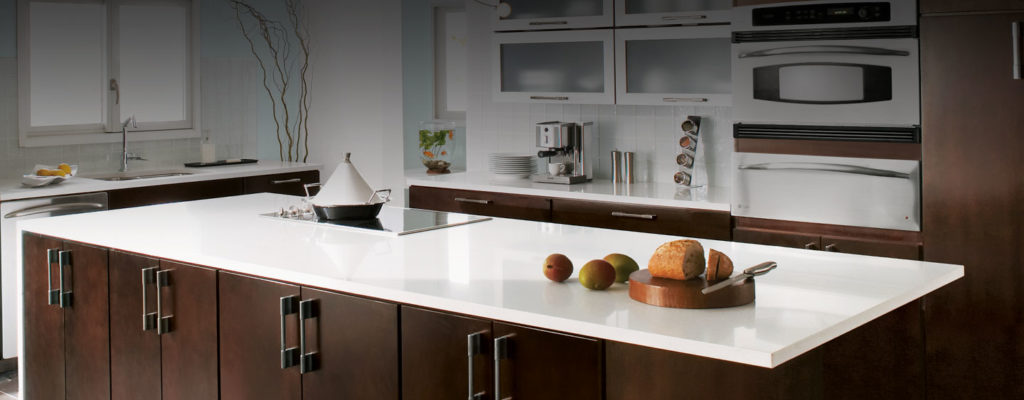
When installed in a kitchen, countertops are usually about 24inches (600 mm) from front to back and are designed to slightly-overhang standard kitchen base cabinets. This allows a convenient reach to objects at the back of the countertop. They often contain a backsplash to prevent spilled liquids from falling behind the cabinets. The face of the countertop may be decorated in ways ranging from plain to very elaborate. The countertop may be cut to accommodate sinks, stoves, ranges, and cooktops, or other accessories such as drain boards.
The commonly used materials for kitchen countertops can vary from granite to concrete. Each material has advantages and disadvantages. As an Architect, I have described ten of the most popular kitchen countertop materials in detail so that you can decide whether it is suited for your requirement and your kitchen:
Where is the best material option for a kitchen countertop?
Granite as a kitchen countertop.
Engineered stone as a kitchen countertop.
Solid surface as a kitchen countertop.
Ceramic tiles as a kitchen countertop.
Laminate as a kitchen countertop.
Wooden as a kitchen countertop.
Stainless steel as a kitchen countertop.
Soapstone as a kitchen countertop.
Marble as a kitchen countertop.
Concrete as a kitchen countertop.
WHAT IS THE BEST MATERIAL OPTION FOR A KITCHEN COUNTER TOP?
The kitchen countertop needs to be extremely hard-wearing, sturdy and add to the beauty of the kitchen. Countertops can be made from a wide range of materials. Usually the more durable and easy to use materials are costlier. However some very expensive materials are neither particularly durable nor easy to use, just stylish. Here is a list of the materials that can be used, along with their pros and cons, so that you can make the right choice when you remodel your kitchen.
1. GRANITE AS KITCHEN COUNTER TOP:
Granite is the most popular choice for kitchen counter tops as it is one of the most durable materials and adds elegance and style to a Kitchen. Granite is available in a number of colours and possesses an inner illumination (because of the small flecks of light present within the rock which can be seen from the surface) that has a way of softening the room and giving it a more sophisticated appearance. The granite kitchen countertop a very attractive option for many homeowners because it is easy to use and maintain.
 Advantages of Granite as kitchen counter top:
Advantages of Granite as kitchen counter top:
- Appearance: Looks beautiful, permanent and substantial and comes in a range of almost 3000 colors;
- Maintenance: Easy to clean and maintain, since the surface is very smooth;
- Durability: Second highest hardness rating after diamonds and will last a lifetime;
- Heat resistance: Holds up to heat;
- Scratch resistance: It is resistant to scratches;
- Porosity: Granite is not very porous and hence water-proof and mostly stain proof. Also it inhibits the growth of fungus and bacteria;
- Value: Adds a high value to home buyers.
Disadvantages of Granite as kitchen counter top:
- Cost: Granite is expensive, but becoming more affordable. However, Granite tiles are much more affordable;
- Maintenance: Since some granite stones are more porous, they absorb stains if not sealed periodically;
- Replacement: The granite obtained from each quarry is unique in its colouration and patterns and so it will be impossible to replace a damaged piece.
- Installation: Granite is heavy and needs special tools and material for installation;
- Brittleness: Granite is very strong and hard but can crack if stressed or improperly installed.
However, there should be some moderation in using granite. You cannot put granite all over the kitchen just because it is cheap in India and has so many advantages. An Interesting post on treehugger caught my attention. I wanted to share it with you all.
2. ENGINEERED STONE AS KITCHEN COUNTER TOP:
Engineered stone is composed of 95% quartz particles and 5% polymer resins and is available in a more colours than granite. Engineered stone is not as popular as granite but is often confused for a granite finish. Engineered stone has all the pros of granite but is easier to maintain, less porous and more scratch resistant than natural quartz surfaces.
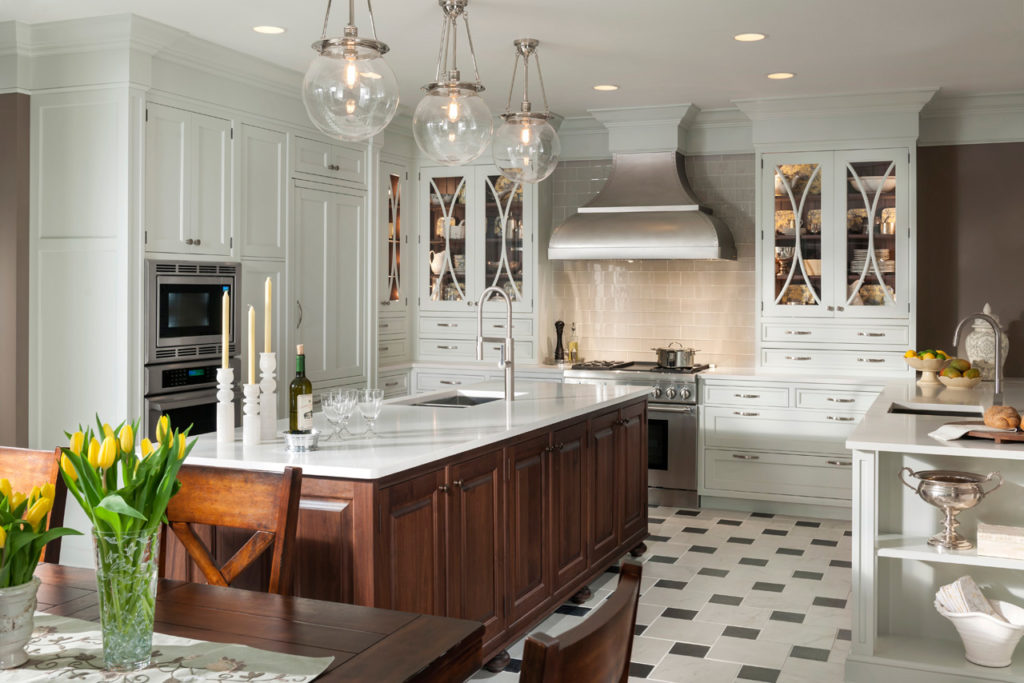
Advantages of Engineered Stone as kitchen counter top:
- Variety: Enginneered stone is available in a wide range of colours – some imitate granite and some are available in pastel colours;
- Customisation: Engineered stone can be customised for your kitchen as it is a flexible material;
- Durability: Though Engineered stone is not as durable as natural stone, it is quite strong and can last for decades before you have to replace it;
- Scratch resistance: It is scratch resistant but can dullen knives if used regularly on it;
- Heat resistance: It can withstand heat from hot objects;
- Porosity: It has a non-porous surface which is resistant to stains, acid and fungus and bacterial growth;
- Maintenance: It is easy to maintain and care and does not need the periodic sealing required for natural stone.
Disadvantages of Engineered Stone as kitchen counter top:
- Cost : It is expensive, sometimes even more than Granite.
- Installation: It requires professional installation;
- Appearance: An engineered stone countertop lacks the natural quality in terms of colour, pattern variations and aesthetic beauty. Also, the seams are usually visible along the front edge beacuse the stone is laid by the slab.
3. SOLID SURFACE AS KITCHEN COUNTER TOP:
Solid surface countertops get their name from the fact that their material is solid throughout the entire thickness. Solid surfaces make use of heavy-duty plastic sheets (acrylic, polyester, or a combination of the two) that are laminated onto a wood/plywood substrate. Solid surface countertops are custom-made at site by companies such as Avonite, Corian, and Swanstone. The countertops are very versatile and can be joined, shaped and finished to your specifications. Solid surface countertops are quite popular because of the wide range of colours and patterns, their simple yet stylish look, smooth feel, and low maintenance.
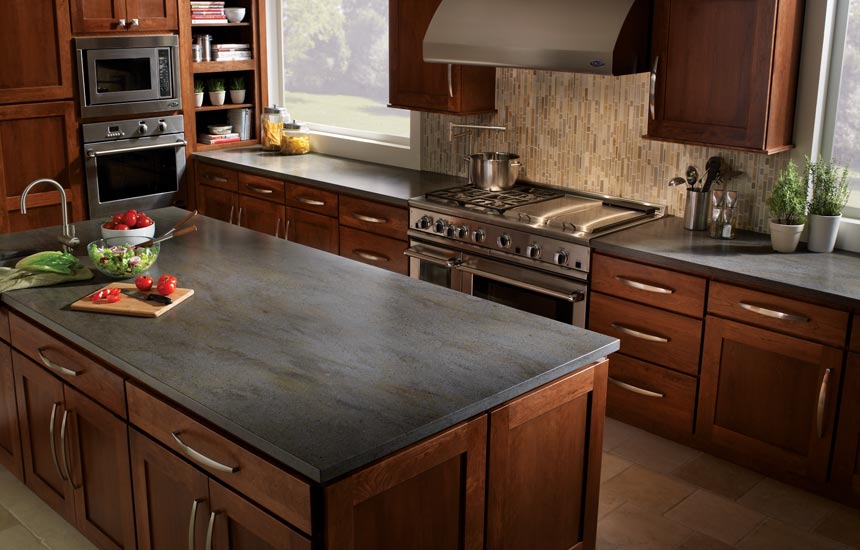
Advantages of solid surfaces as kitchen counter top:
- Durability: Solid surfaces are quite durable and can withstand the impact of falling pots;
- Customisation: They can be custom-made to any shape and size;
- Porosity: They are mostly non-porous and hence stain resistant and prevent the growth of fungus and bacteria;
- Variety: Solid countertops are available in a rainbow of colours and patterns;
- Appearance: Since they are usually installed as a single integrated piece, they usually do not have seams;
- Maintenance: They are easy to maintain and can easily be repaired – Scratches can be buffed off and fractures and dents can be repaired with minor reconstruction.
Disadvantages of solid surfaces as kitchen counter tops:
- Heat resistance: They are vulnerable to hot pans as the heat can permanently damage the surface. Also, they can crack below temperatures of 5 degrees celcius.
- Cost: They are reasonably expensive.
4. CERAMIC TILE:
Ceramic tile countertops are countertops laid with ceramic tiles, secured with grout. They are made from pressed clay with a matte finish. Ceramic tiles are a popular choice for countertop material. Ceramic tile countertops can add an interesting accent to almost all types of kitchen. They are also very functional, easy to clean, inexpensive and can last years. The only downside is that the grout in between the tiles can be difficult to clean (if poorly designed) and the surface can end up uneven.
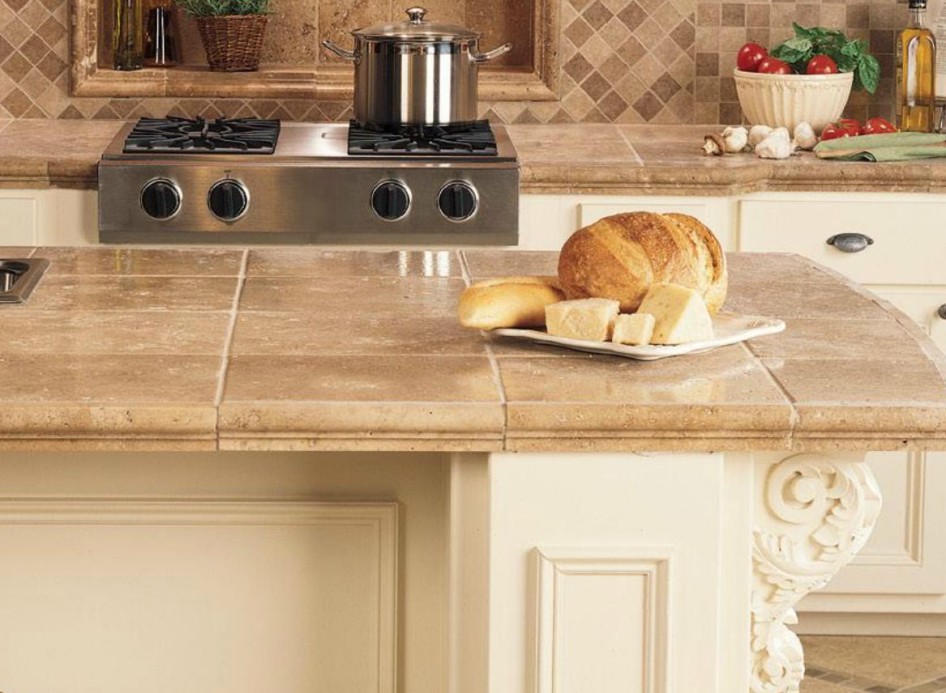
Advantages of ceramic tiles as kitchen countertop:
- Cost: Ceramic tiles are inexpensive and much more affordable than natural stone like granite and marble;
- Durability: They are quite durable and can withstand more impact than solid and laminate countertops;
- Heat resistance: They can withstand heat;
- Maintenance: They are easy to clean;
- Variety: Wide range of price, colour, texture and design.
Disadvantages of ceramic tiles as kitchen countertop:
- Brittleness: Ceramic tiles can easily chip or crack under hard impact and extreme temperatures;
- Appearance: The counter surface is uneven and not smooth because of the tiles and grout joints between;
- Grout joints: can easily stain and are not easy to maintain;
- Customisation: Tiles can be custom made but custom-designed tiles are very expensive.
5. LAMINATES:
Laminate counter tops are made out of plastic coated synthetics with a smooth surface that is usually easy to clean. There are two types:
Postformed: Also referred to as “plastic laminate countertop” is formed by bonding decorative papers and resins through high heat and pressure to the substrate, a wood product.
Self/Wood-edge plastic laminate countertop: In this style, the substrate for the countertop is made of MDF or particle board and then, laminate sheets are glued to it. The laminate is then finished on the edges. This method can’t reproduce the curved contours of post-formed countertops.

Advantages of laminates as countertop material:
- Affordability: The biggest advantage of laminate finishing is it’s affordability and range of patterns and colours. It’s relatively durable and easy to replace if stained or damaged.
- Variety: Amongst all countertop materials, Laminates are available in the widest range of colours, patterns and textures;
- Maintenance: A laminate countertop is easy to clean;
- Porosity: A laminate countertop does not harbor the growth of mold, mildew, bacteria, and other microorganisms.
- Cost: Laminate is the most affordable compared to other materials. However, end finishing and front edge choices can be expensive.
Disadvantages of laminates as kitchen countertops:
- Scratch resistance: A laminate countertop is susceptible to scratching, chipping, cuts, and breakage especially along its edges.
- Heat resistance: A laminate countertop does not have the ability to resist heat and burns. It can crack when exposed to heat;
- Repair: A damaged laminate countertop cannot be repaired.
- Durability: Laminates are not that durable as they cannot withstand cracks, scratches and chipping.
6. WOODEN COUNTERTOPS:
Wood countertops offer a beautiful warm look and are available in a wide range of colours and finishes. Hardwoods such as maple and oak are most often used as countertop woods. Wooden Countertops can come in a variety of designs ranging from Butcher’s Block to Joined Planks to Single Wide Stave. Wood is considered to be the most eco-friendly option when it comes to choosing a kitchen countertop as wood is a renewable resource. But, they can be damaged by water and stains overtime and need to be oiled or sealed.

Advantages of wood as countertop material:
- Versatility: Wood countertops can fit well into almost all kitchen designs – modern, sleek, and stylish, or roughed out for a rustic country theme;
- Easy installation: Wood countertops are very easy to install;
- Sanitation: Wood has a natural mechanism that prevents the growth and buildup of bacteria;
- Cleaning: Wood is easy to clean as it is smooth;
- Scratch resistance: Wooden counters can be sanded and resealed.
- Variety: Wood comes in a variety of colours, finishes and types of wood.
Disadvantages of wood as kitchen countertop material:
- Maintenance: Wood is less durable than most other countertop materials and can easily get damaged by impact, moisture, heat, and cold. It needs regular refinishing, cleaning with mineral oil, sanding and buffing;
- Heat resistance: Wood can easily get burnt and is a fire hazard
- Durability: Wood countertops last about four to eight years at most, compared to stone countertops, which can last for decades. This is beacause wood naturally oxidizes with age.
7. STAINLESS STEEL COUNTERS:
Stainless steel countertops are kitchen countertops made of stainless steel. Also known as corrosion resistant steel, stainless steel is a metal alloy that contains around 10% chromium which gives it its stainless look. For a really contemporary and industrial look for your kitchen, stainless steel is a good choice. Because they’re constructed to your specifications, you can have a seamless countertop. Stainless steel is extremely heat resistant and durable. While they are easy to clean, they can also appear clinical, they are noisy, very expensive it’s difficult to modify the fabrication yourself.
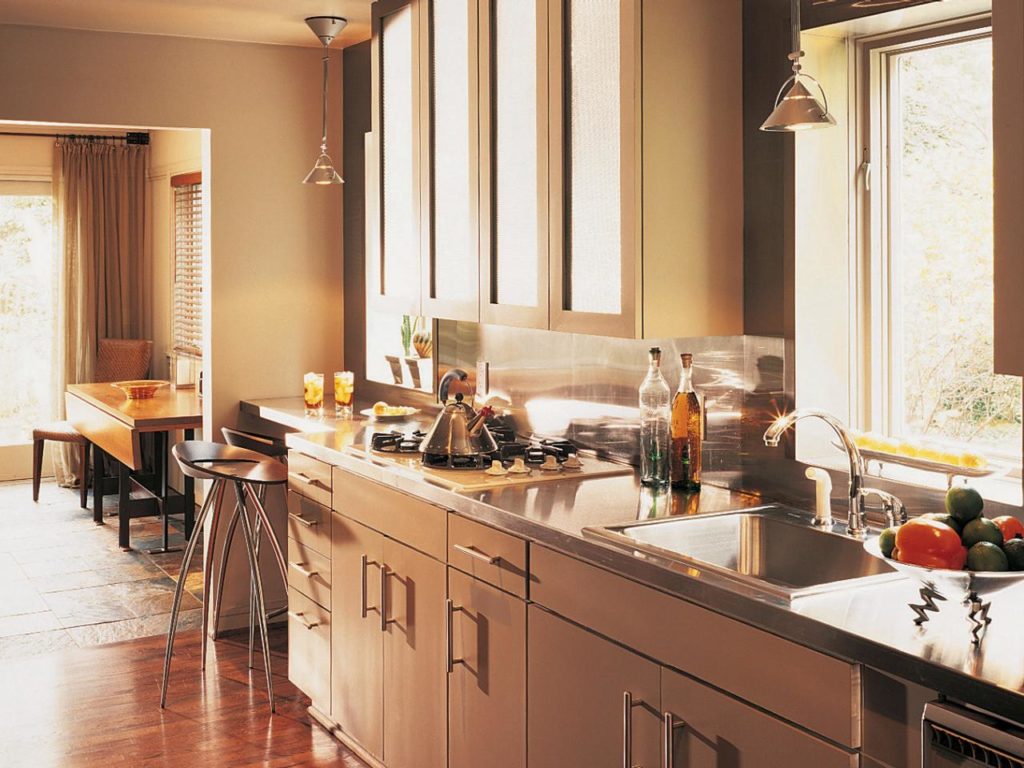
Advantages of stainless steel as kitchen countertop material:
- Durability: It is durable and is highly heat resistant;
- Brittleness: It is crack resistant;
- Porosity: It is non-porous and hence, resistant to stains and corrosion, is waterproof and easy-to-clean;
- Flexibility: Stainless steel is flexible which enables it to be installed in all kinds of unique spaces;
- Installation: It is easy to install and is generally installed as one solid piece;
- Joints: It does not have grouts or joints which trap food, grease, dirt;
- Appearance: It adds to the appearance of the kitchen by giving it a sleek and modern look; Also, stainless steel gently reflects light, which creates the illusion of a larger kitchen space;
- Variety: These sheets come in a variety of finishes, including quilted, non-directional, checkerboard, and a variety of diagonal designs.
Disadvantages of stainless steel as kitchen countertop material:
- Scratch-resistance: It often shows scratches and can dent;
- Noise: It can be quite noisy if not stabilized properly with a strong backing;
- Maintenance: Food, grease and fingerprints all show very clearly, necessitating continual cleaning.
- Cost: It is quite expensive.
8. SOAPSTONE COUNTERS:
Soapstone is generally a dark gray, metamorphic rock that is made of talc, dolomite, magnesite, and chlorite. The high proportion of talc gives soapstone a soft and soap-like texture, hence its name. It is often seen in old homes but is quite popular in modern homes as a countertop and sink material because of it’s rich appearance, it’s durability, stain and heat resistance. However it requires regular maintenance to prevent it from cracking over time.
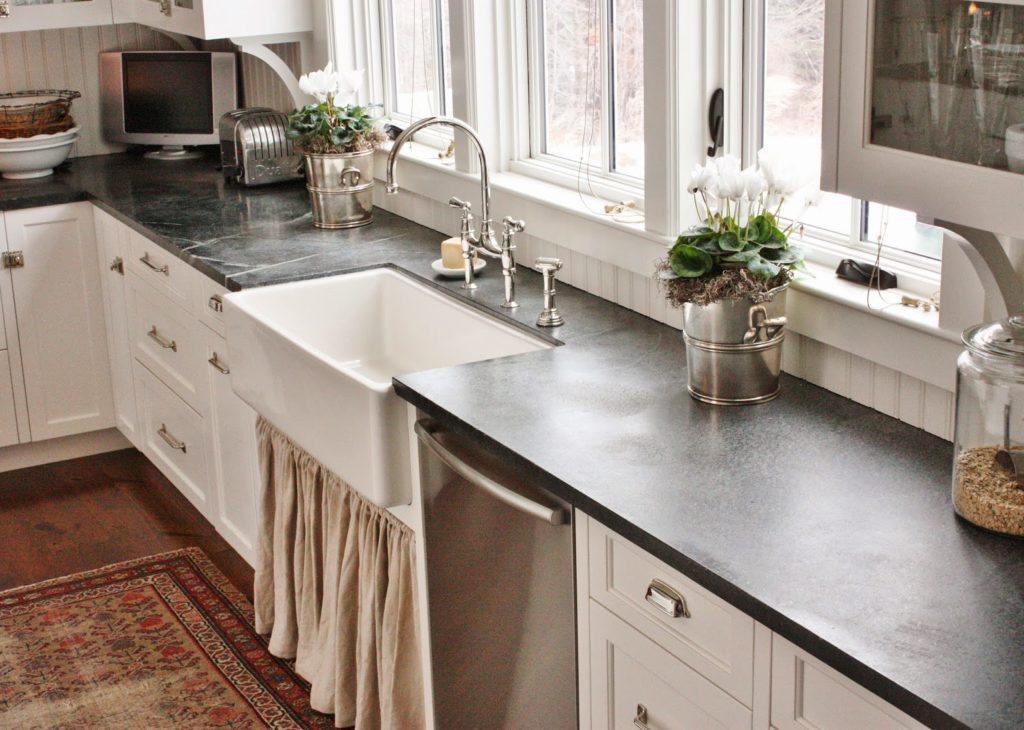
Advantages of soapstone as kitchen countertop material:
- Appearance: It has a rich, deep, natural colour and a very smooth feel;
- Durability: Like granite and marble, soapstone is quite durable and does not crack easily;
- Stain resistance: Since soapstone is an inert material, it does not react with acids or alkhalis and hence is stain resistant to a large extent.
- Heat resistance: Soapstone is a good retainer of heat and distributes the heat evenly without causing burn marks.
Disadvantages of soapstone as kitchen countertop material:
- Maintenance: Because it is a natural material, a soapstone countertop requires scheduled maintenance as it can crack and darken over time. It needs to be coated with mineral oil several times a year to prevent discoloration and cracking.
- Replacement: Soapstone countertops may be difficult to replace if there are damages or cracks on the surface because each slab has its own unique pattern and shade.
9. MARBLE:
Marble is a metamorphic rock composed largely of calcite or dolomite available in different colors that result from differences in mineral content. It can be highly polished to create a very shiny and elegant surface. Marble requires constant maintenance, as it easily stains. However, some new sealers retard staining. But it does give a luxurious look.
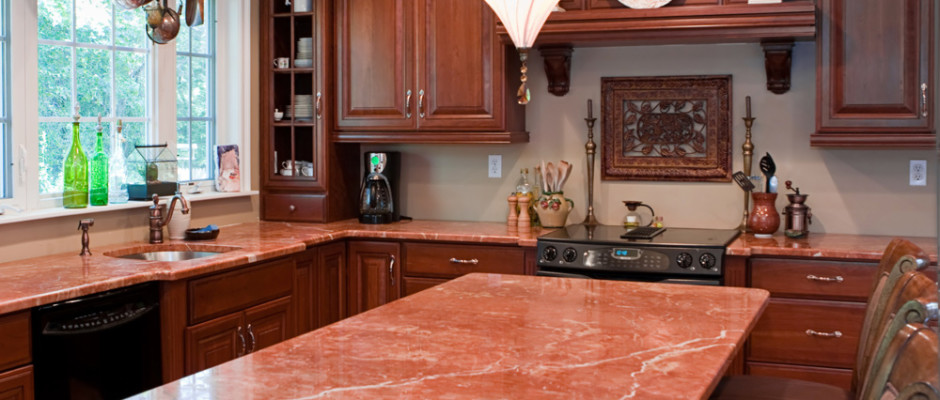
Advantages of marble as kitchen countertop material:
- Durability: Marble is a strong and durable material that can last for decades if properly cared for;
- Brittleness: Since it is a natural stone, it does not crack or break easily;
- Heat resistance: It does not catch fire or burn, but if very hot pots are placed on it, the heat may change the colour of the marble permanently and cause that area to be significantly darker.
- Appearance: It looks beautiful and luxurious and can add elegance to the kitchen.
Disadvantages of marble as kitchen countertop material:
- Cost: It is very expensive, though lower quality ones and marble tiles are cheaper;
- Porosity: It is quite porous and hence stains easily unless professionally sealed;
- Scratch resistance: It can scratch if you cut vegetables directly on it;
- Maintenance: It may need resealing periodically.
10. CONCRETE COUNTERS
If your kitchen requires countertops in unusual shapes, concrete may be a good choice, as they’re often cast right in your kitchen. Concrete countertops are structurally sound and also provide a decorative finish that resembles polished stone but at a lesser cost. On the downside, it may crack and the finish can be quiet porous.
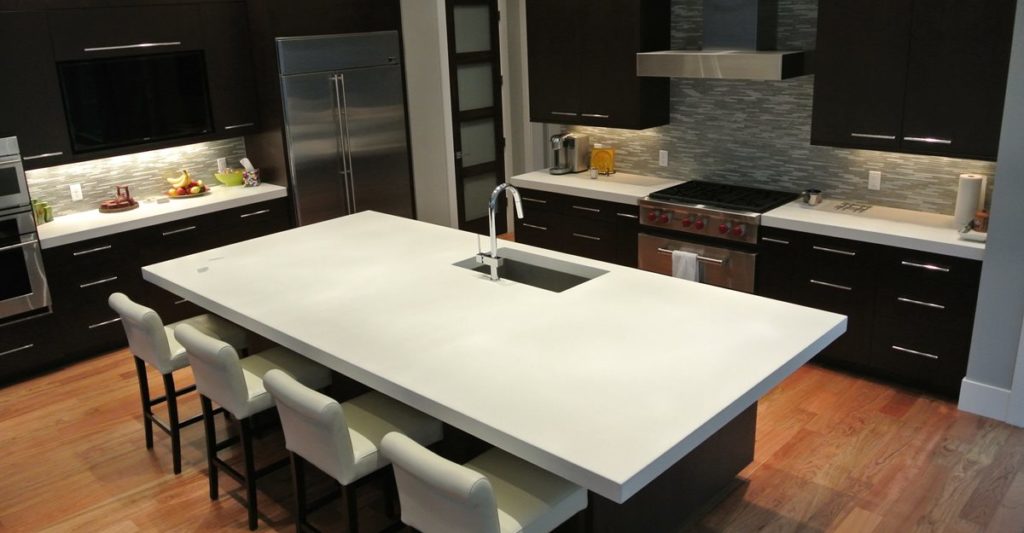
Advantages of concrete as kitchen countertop material:
- Heat resistance: Concrete is heat resistant and will not burn if hot pots are placed on it. But the sealant can damaged and to prevent staining of the counter, the sealant should be reapplied;
- Appearance: Concrete counters can be colour-tinted and looks exotic and unusual;
- Durability: They are quite durable and can last for around 20 years;
- Scratch resistance: Concrete is quite strong and can resist chipping, breaking and scratches;
- Customisation: the best option for unusual shaped counters, since it is cast at site.
Disadvantages of concrete as kitchen countertop material:
- Cost: Mid to high range cost due to custom work;
- Porosity: It is porous but can be sealed. But it needs regular resealing;
- Brittleness: Cracking is possible, but nowadays, new treatments eliminate cracking
For a concise Vastu guide and evaluation of your Kitchen and Kitchen Backyard, please refer to the posts on my blog: House construction in India
Related Topics:
If you found this post useful, I would really love it if you pin it or share it. I have not blocked the site just because your ad blocker is switched on because I hope my content will be useful to you.


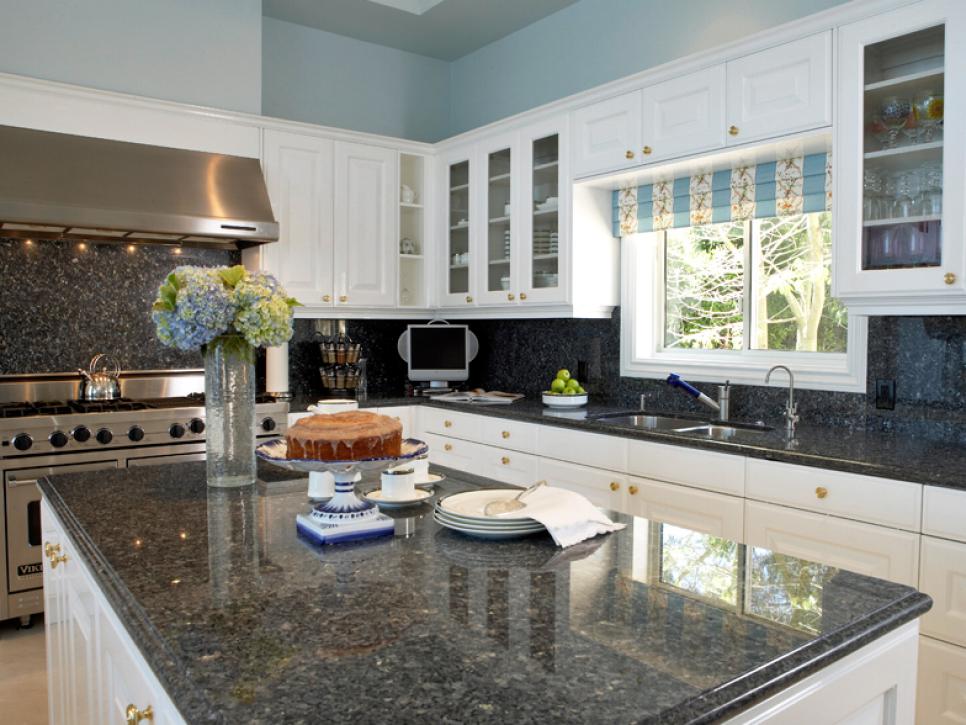 Advantages of Granite as kitchen counter top:
Advantages of Granite as kitchen counter top: 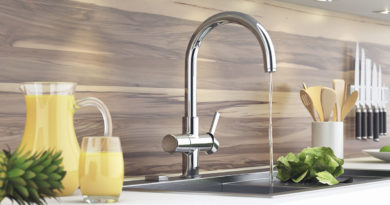

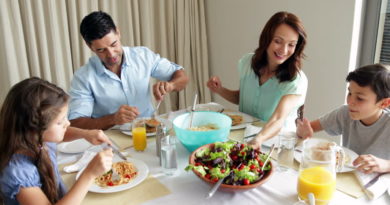
Hi, I was wondering about the use of shahabad stone for my kitchen countertop as well as flooring. Any advice?
Thank you!
Hi Arati,
Shahabad stone is like limestone. It takes scratches, gets stained easily since it is not very dense in structure. So it is not at all recommended for countertops but is a good choice for floors.
Admin
Estoy interesada en una cocina con topes de concreto. (translation: I’m interested in a kitchen with concrete countertops.)
Hi Carmen Roz,
Sorry we are not dealers of any products. This is only a site about Architecture. The accompanying images are only used to explain the text better
Admin